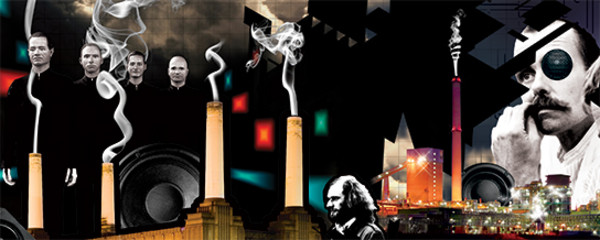What Is It? Krautrock
When critics use “Krautrock” as a descriptor, they usually mean the mesmerizing motorik rhythms pioneered […]
What Is It? Krautrock
When critics use “Krautrock” as a descriptor, they usually mean the mesmerizing motorik rhythms pioneered […]

When critics use “Krautrock” as a descriptor, they usually mean the mesmerizing motorik rhythms pioneered by Can and Neu!, as exemplified by “Mother Sky” and “Hallogallo,” respectively. Awesome touchstones for a genre, but they represent merely a tiny fraction of the music that emerged from Germany during Krautrock’s Golden Age (1968-1974).
Krautrock is a hydra-headed beast and, at its best, it consists of some of the most synapse-singeing sounds ever laid down. Influenced by American/Anglo rock–yet detached from it, and bursting to free themselves from the country’s shameful Nazi past–post-war German musicians imbued rock with an eccentric, often fantastical/kosmische [cosmic] perspective that brazenly departed from traditional sounds. “We were trying to put aside everything we had heard in rock ‘n’ roll. We had the urge of saying something completely different,” Faust’s Jean-Hervé Peron once told The Wire. Not coincidentally, hallucinogens back then were stronger, too.
Krautrock’s zenith can be heard in the best material by Can, Neu!, Faust, pre-Autobahn Kraftwerk, Cluster, Harmonia, Popol Vuh, pre-Phaedra Tangerine Dream, and Amon Düül, as well as in the peaks of about a dozen other artists not discussed by Julian Cope in his 1995 survey/manifesto, Krautrocksampler. Many works by these artists have become crucial components in the hipster canon and have influenced enough bands to fill several years of Coachella lineups.
For example, Cluster’s early LPs have had a profound impact on industrial music’s brainier practitioners, about half the Kranky Records roster, and ambient-guitar savants like Fennesz and Eluvium. Mid-period Cluster albums like Zuckerzeit and Sowiesoso helped to pave the way for electro pop, while the gentle cosmic mesmerism of Harmonia (Cluster with Neu! guitarist Michael Rother) influenced Brian Eno’s forays into deep-space ambient music (and coaxed him into collaborating with Cluster’s Moebius and Roedelius).
Some of Krautrock’s most compelling output has sprung from groups with pronounced jazz and improv-jam elements: Embryo, Dzyan, Brave New World, Wolfgang Dauner and his Et Cetera project (whose Et Cetera is one of the greatest albums ever). And when it comes to infusing spiritual beauty and poignancy into exploratory rock and making New Age (uh-huh) a conduit to the deity of your choice, Popol Vuh and Deuter are unrivalled. Ask Werner Herzog.
Finally, Krautrock’s Big 4 deserve all the hype lavished upon them. Kraftwerk’s first three albums yielded unique amalgams of musique concrète and psychedelic experimentation that anticipated post-rock by two decades. Faust invested a Dadaistic spirit into a befuddling array of approaches, including drone (see the track “Krautrock”), whimsical pop, and collage. Neu! excelled at both gorgeous, glistening stasis and hypnotic propulsion that birthed one of the most satisfying rhythms ever (the aforementioned motorik). And Can is simply the greatest band ever when they’re on, which was nearly always from ’68-’76. Their bold excursions into mantra-like rhythms, innovative textures, and spellbinding melody have actually improved with age–a testament being their song “Vitamin C,” which has become a breakdance staple.

